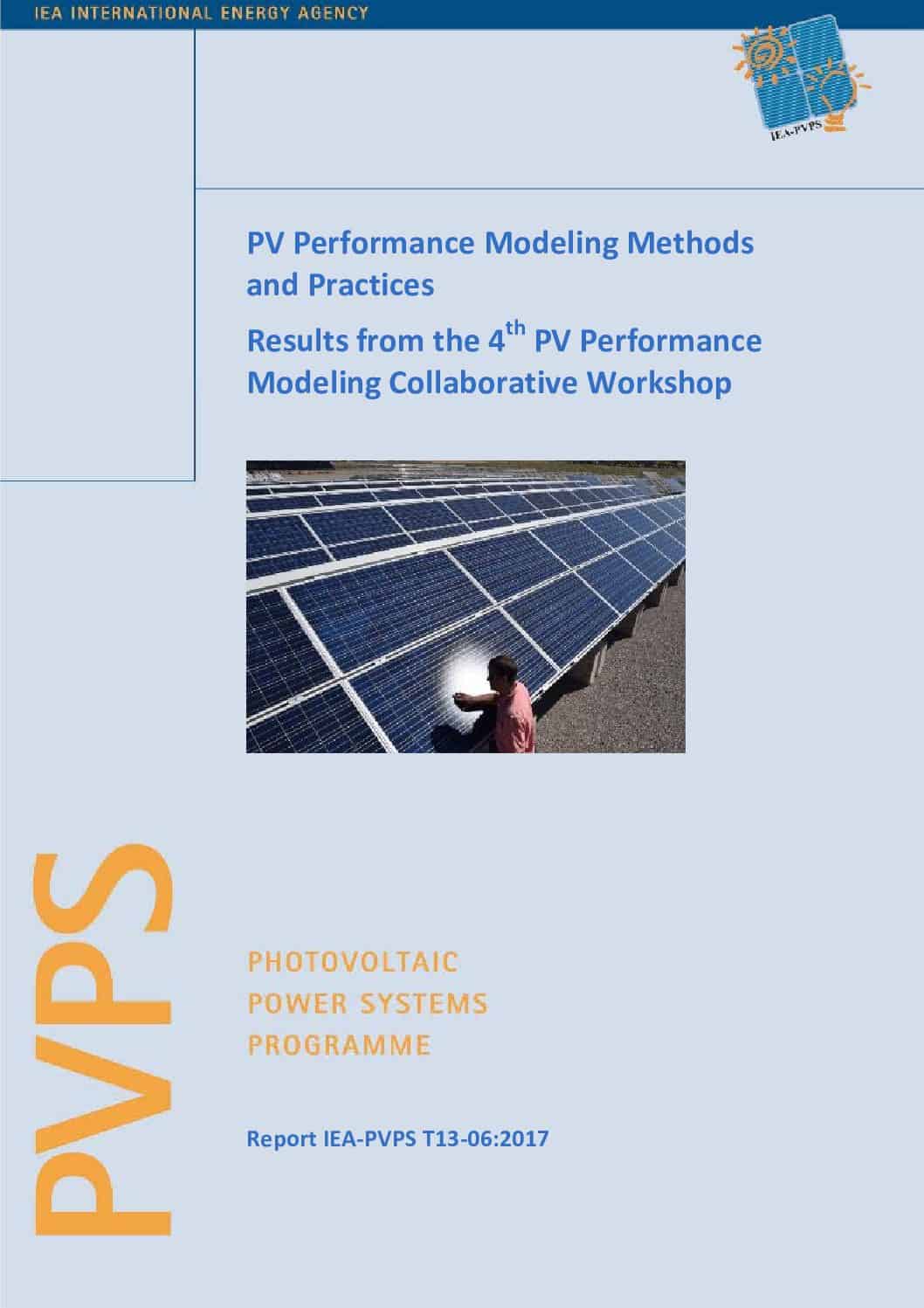IEA PVPS Task 13, Report IEA-PVPS T13-06:2017, March 2017
The PV Performance Modeling Collaborative (PVPMC) is a group started by Sandia National Laboratories in 2010 to bring together stakeholders with the aim of advancing the “state of the art” in PV performance prediction. The PVPMC hosts a technical website (pvpmc.sandia.gov), workshops, and open-source modeling function libraries (PVLIB). In 2015, IEA PVPS Task 13 formed a partnership with the PVPMC to increase international participation in this group’s mission.
This report accomplishes two tasks. The first is to provide a technical overview of the steps to modeling the power and energy output from grid connected PV systems. The second is to provide a summary of the results of the first in a series of joint IEA PVPS Task 13 / PVPMC workshops, which was held in Cologne, Germany at the headquarters of TÜV Rheinland on October 22-23, 2015. Subsequent joint workshops have occurred at Fraunhofer ISE in Germany (2016) and at SUPSI in Switzerland (2017).
Approximately 220 solar energy experts from over 30 countries and four continents gathered for two days to discuss and share results related to predicting the performance and monitoring the output from solar photovoltaic (PV) systems. The workshop was divided into six topical sessions exploring advances in the areas of solar resource assessment and uncertainty quantification, effects of irradiance spectrum on PV performance, soiling losses, bifacial PV performance, modeling tools, and monitoring applications.
Highlights from the workshop include the following:
- Validation and comparison of four satellite irradiance products across Europe show that these data sets are becoming more accurate and that differences between different products are becoming smaller.
- A number of new spectral irradiance data sets are being developed from satellite data sources. The general availability of such data has promise to reduce uncertainty in PV performance modeling since spectral mismatch is one of the major sources of uncertainty in current tools.
- Two new spectral mismatch models were introduced at the workshop that utilize readily available meteorological data such as precipitable water, clearness index, and air mass to better estimate the spectral mismatch in PV performance. Model developers at the workshop expressed their interest in including such models in future releases of software packages.
- Soiling from dust and snow continue to be major causes of energy loss for PV systems, especially in certain regions. Estimating these losses in detail in performance predictions continues to be a challenge.
- Modeling and field data for bifacial PV modules and systems were presented. It is increasingly clear that significant performance gains are available from bifacial technologies; however, current modeling tools are not yet able to accurately predict energy production from bifacial modules.
- Field monitoring of PV systems is still in need of standardized methods to ensure high quality data is collected. Several experts in this area presented examples of good practice, but these examples are not typical of system monitoring in general.
